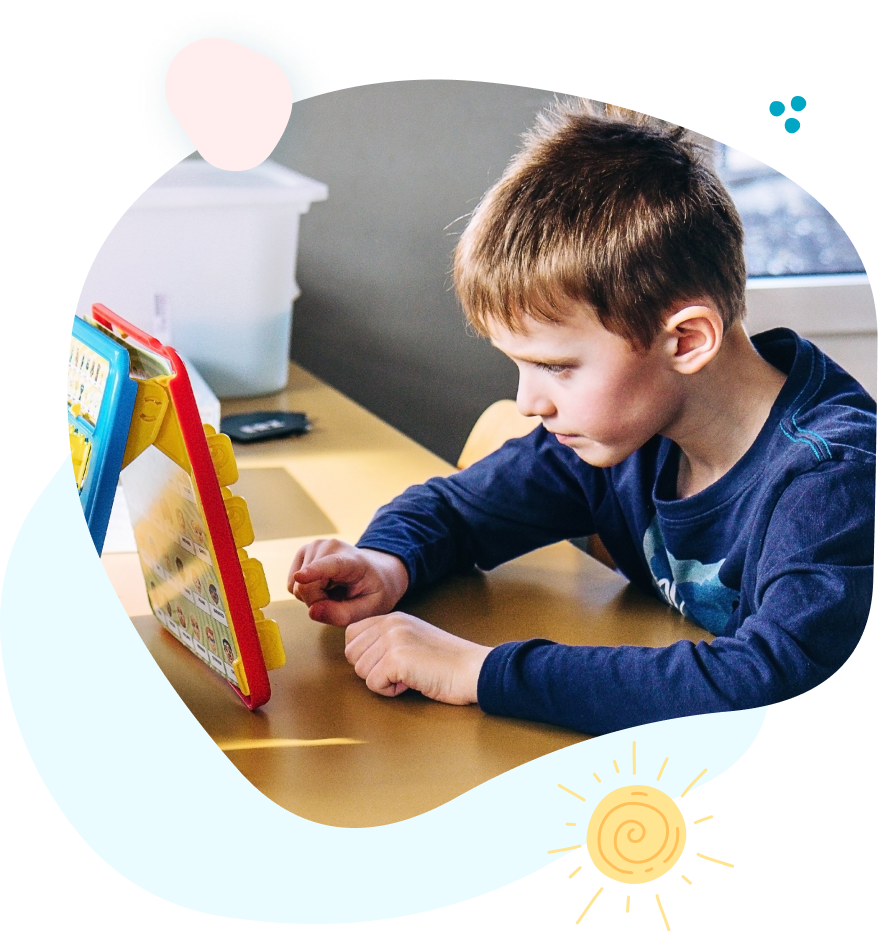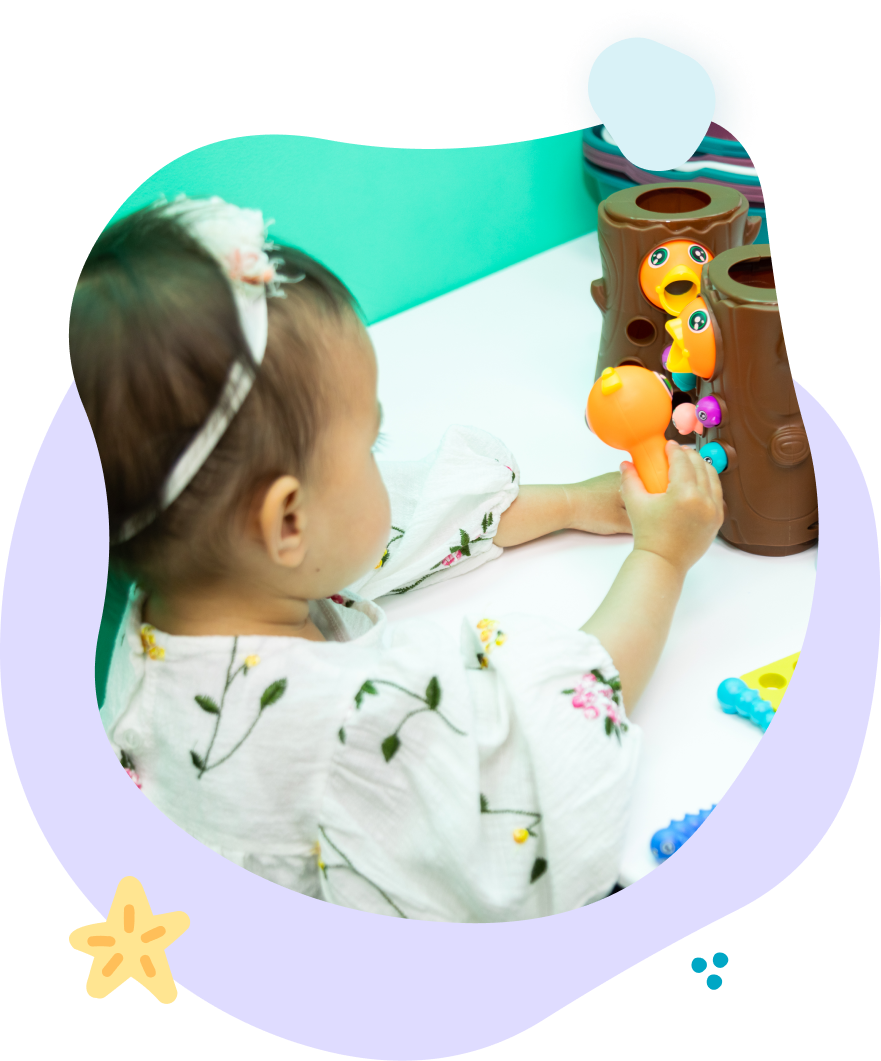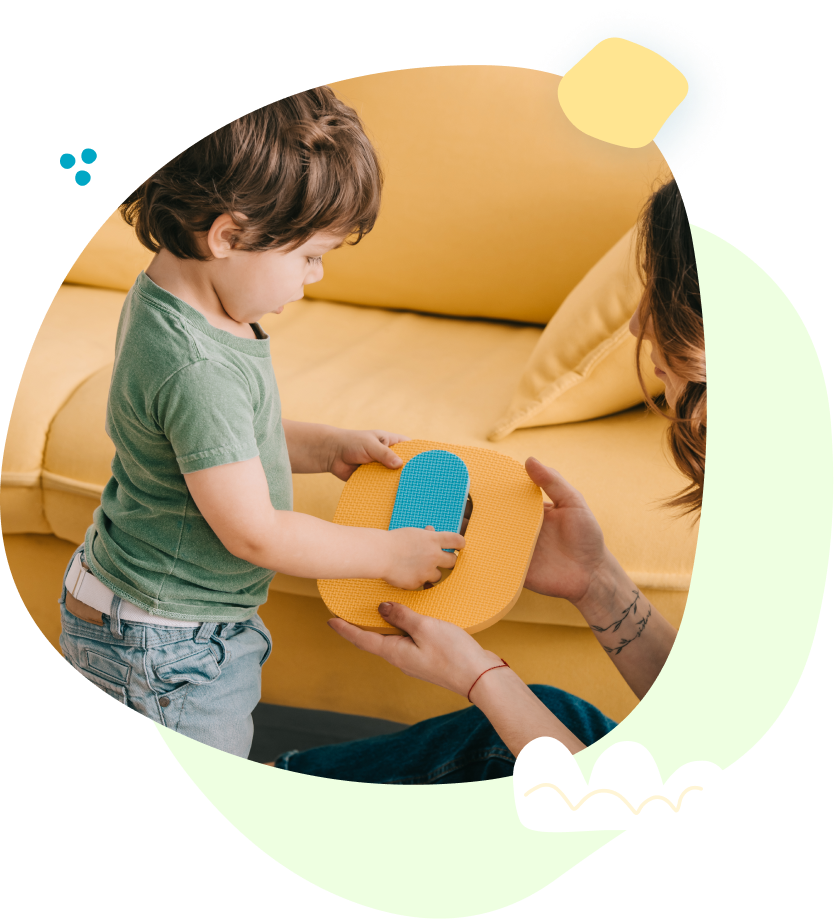Your Clinic
SET A LOCATION
Your Clinic
SET A LOCATION
Pediatric apraxia is a neurological condition that makes it difficult for children to perform planned movements, despite having the physical ability and desire to do so. This condition often impacts speech, known as Childhood Apraxia of Speech (CAS), but it can also affect other motor functions, such as fine and gross motor skills. Children with apraxia may have difficulty with speech clarity, daily tasks, and body coordination. However, speech therapy, occupational therapy, and physical therapy offer effective ways to support children with apraxia and improve their motor and communication skills.

Children with apraxia benefit from our specialized therapeutic tools that target speech motor planning and coordination. Our approaches help children develop the neural pathways needed for clearer, more consistent speech production through targeted interventions.

Korro AI is an innovative platform revolutionizing occupational therapy with artificial intelligence. Designed to streamline therapy planning and enhance patient outcomes, Korro AI empowers therapists with data-driven insights, automated progress tracking, and personalized treatment recommendations. This cutting-edge technology helps optimize therapy sessions and provides objective measurements of progress.

Speech therapy is essential for treating CAS.
Speech-language pathologists (SLPs) use evidence-based techniques to help children improve speech coordination. Key components of speech therapy for CAS include:
SLPs guide children through repetitive practice of sounds, words, and phrases to build muscle memory and improve pronunciation.
Therapy focuses on helping children plan and transition between different speech movements, enhancing speech fluency.
Therapists may use visual aids (e.g., mirrors), hand gestures, or tactile feedback to support speech articulation.
For children who need additional support, AAC devices or strategies, such as communication boards, can help them express themselves and build confidence.
Occupational therapy plays a critical role in supporting children with apraxia, particularly when motor planning and fine motor skills are affected. OT focuses on:
Occupational therapists create fun, structured tasks that help children improve their ability to plan and complete complex movements, such as obstacle courses and step-by-step activities.
For children with sensory processing difficulties, sensory integration therapy can improve their ability to respond to sensory input, enhancing motor planning.
Occupational therapists help children develop essential life skills, such as dressing, feeding, and handwriting, using step-by-step guidance and practice.
Activities designed to strengthen muscles and improve coordination can help children develop better control over their movements.


Physical therapy can be highly beneficial for children with apraxia who struggle with gross motor skills and body coordination. PT aims to:
Physical therapists design exercises to improve balance, coordination, and strength, such as jumping, climbing, and navigating different terrains.
Building core strength and stability helps children stay balanced and move more efficiently during physical activities.
PTs work with children to practice specific movement patterns and body control through engaging play-based exercises, promoting better motor planning and physical confidence.
Children with apraxia benefit most from a multidisciplinary therapy approach. Collaboration among speech, occupational, and physical therapists ensures a comprehensive treatment plan tailored to the child’s unique needs. By addressing
speech clarity,
fine motor skills,
gross motor coordination, and
daily functioning, therapy teams empower children to reach their fullest potential.
At Progressive Pediatric Therapy, we are committed to providing expert, compassionate care for children with apraxia. Our experienced therapists use evidence-based practices to support speech, occupational, and physical development, helping each child overcome challenges and thrive. Contact us today to learn more about how we can help your child achieve their goals.
We empower children, families, and the community to learn, grow, and celebrate every child's unique abilities.
Quick Links
Contact Details
Phone: 561-376-2573 | 561-918-0190
Fax: 561-218-4939
VIP Concierge: 561-717-1764
Clinic Locations
All Rights Reserved | Progressive Pediatric Therapy, Inc. | Privacy Policy | Terms of Service
Site by Spearlance